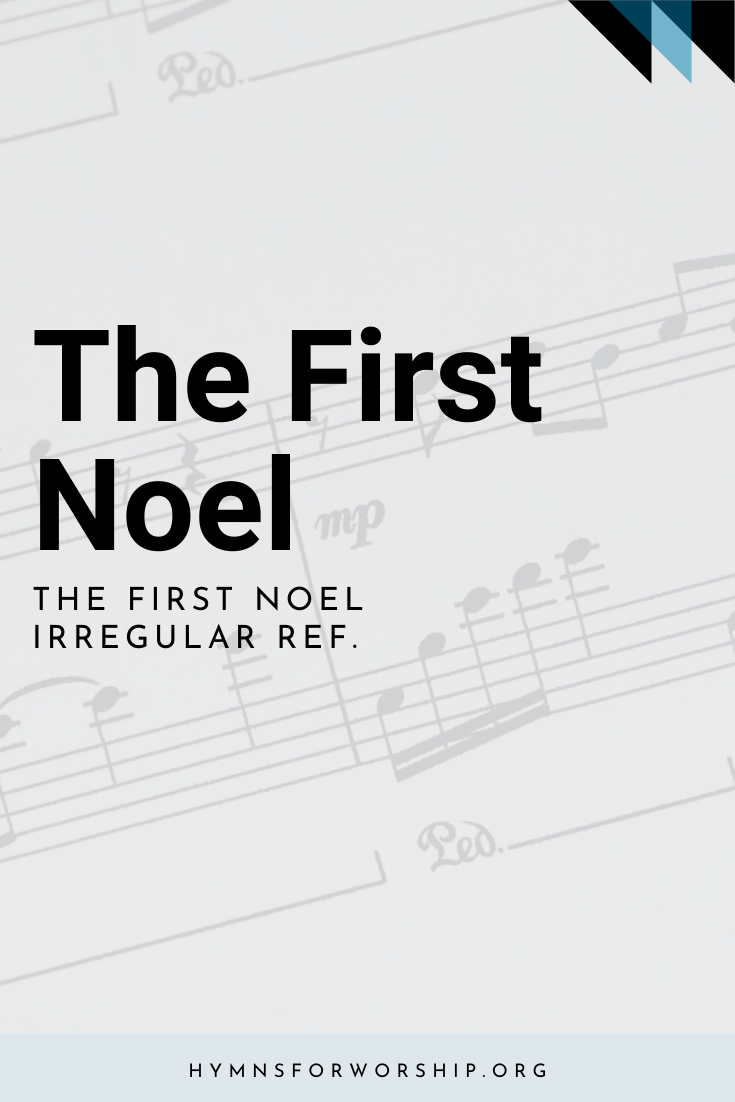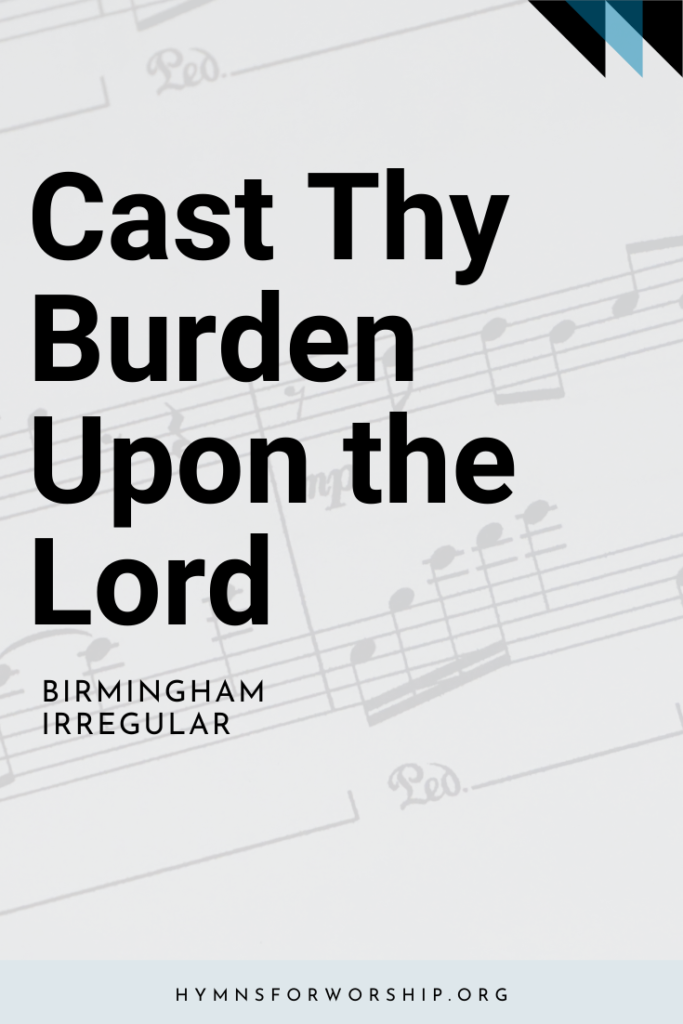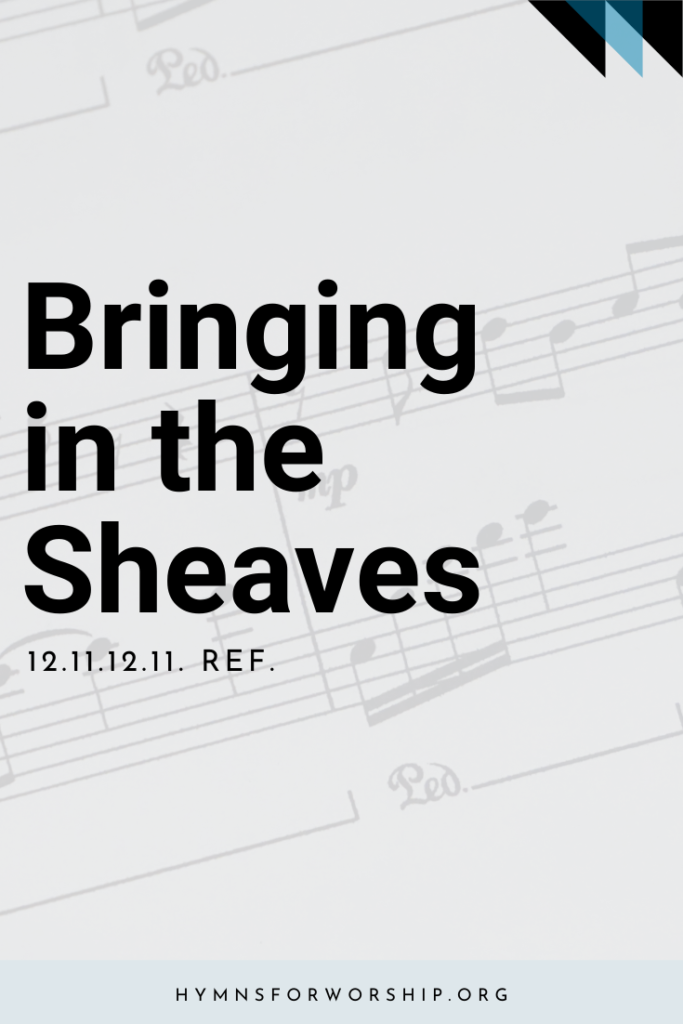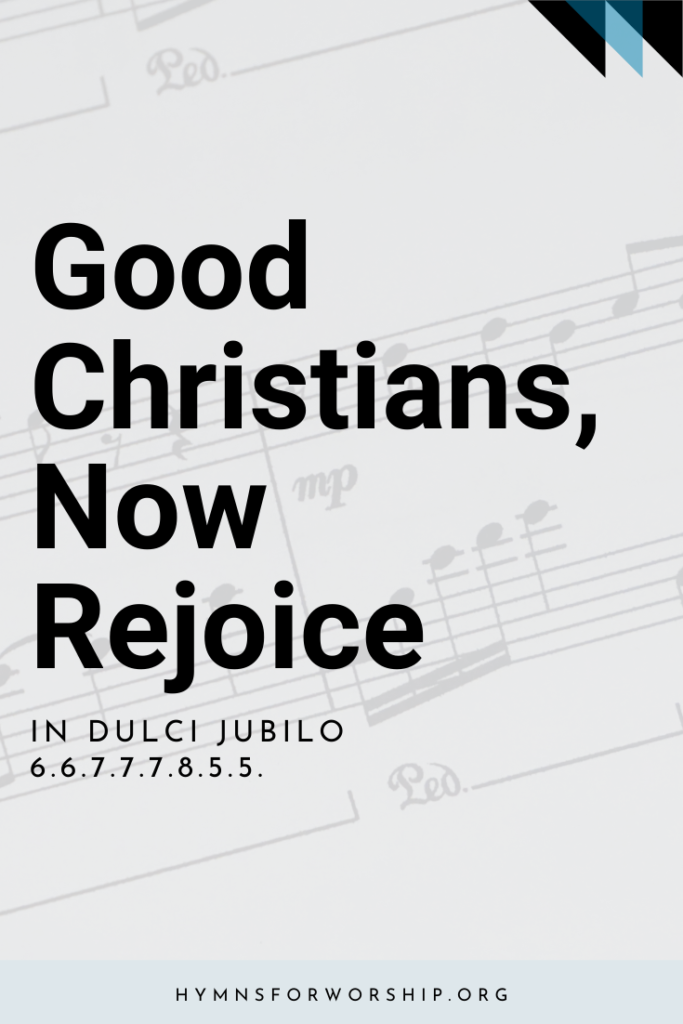JESUS CHRIST >> Birth
SDAH 118
The first noel the angel did say
Was to certain poor shepherds in fields where they lay;
In fields where they lay keeping their sheep,
On a cold winter’s night that was so deep.
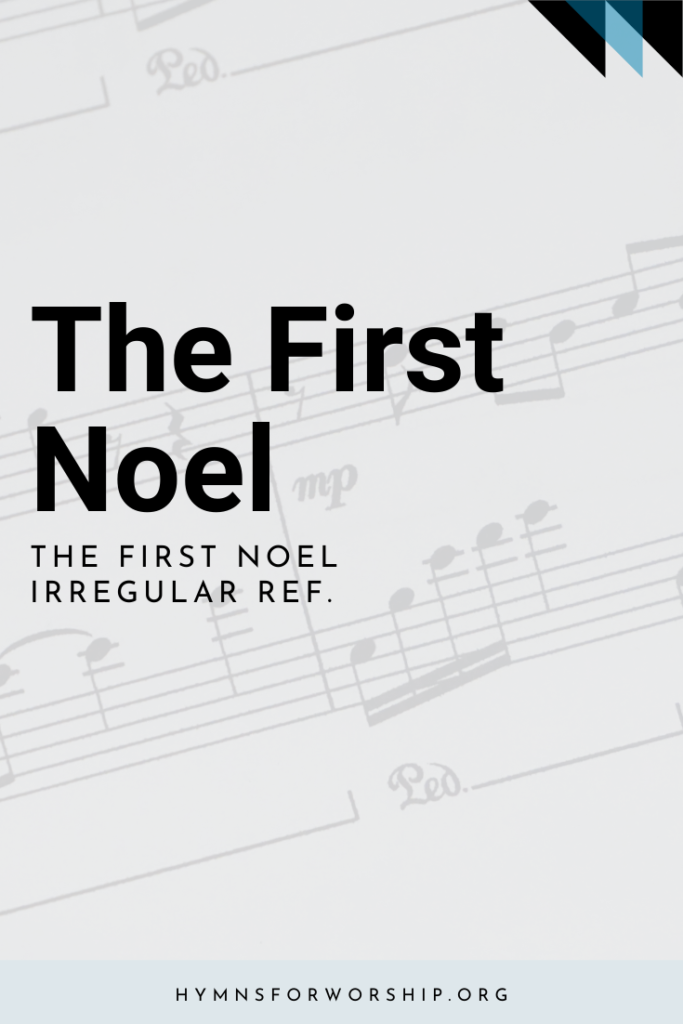
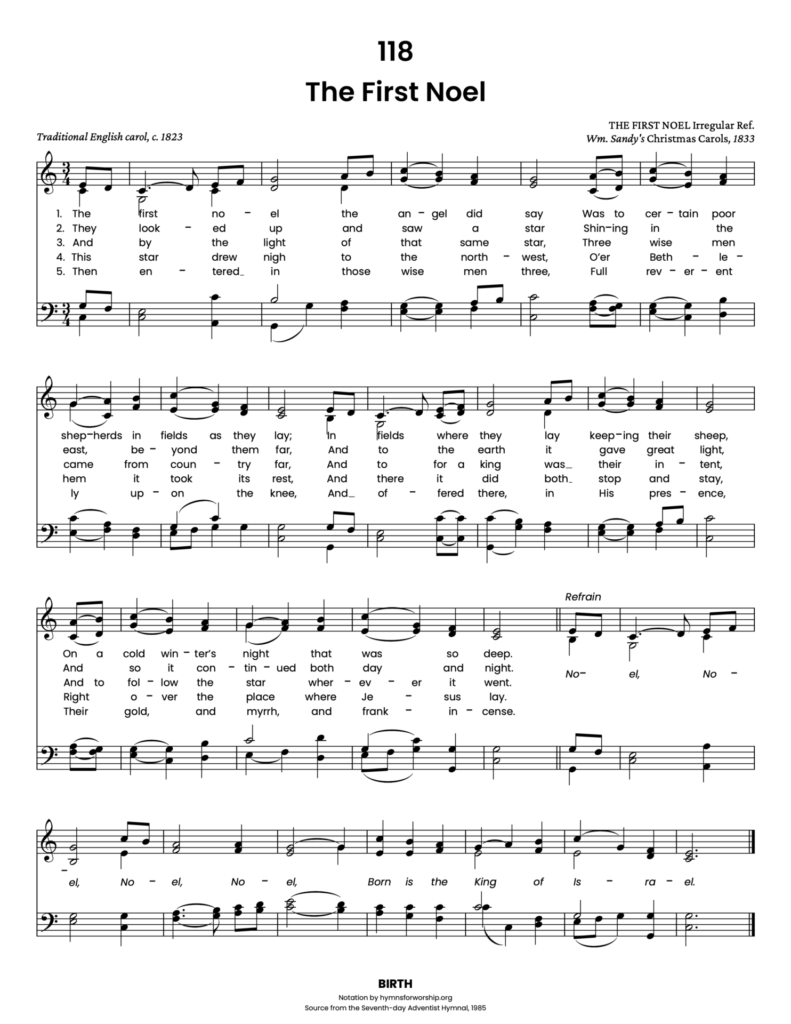
Get the hymn sheet in other keys here
For Worship Leaders
Make each hymn more meaningful with these helpful tools: Short, ready-to-use hymn introductions for church bulletins, multiple ways to introduce a hymn based on your worship theme and in-depth history and insights to enrich your song service.
Hymn Spotlight: The First Noel
This beloved English carol, dating back to at least the 17th century, reflects the heartfelt storytelling style of the people—sung outside the church in the vernacular during the Middle Ages when congregational singing wasn’t part of worship. First published in Some Ancient Christmas Carols (1823) and later in William Sandys’ 1833 collection, it retells the nativity story with joyful, if not always scriptural, detail.
Its name Noel likely comes from the French word for “news” or may echo the sound of “Emmanuel.” The tune’s simple, flowing scale makes it easy to sing—and even easier to love.
As we sing, may we join the long tradition of voices announcing the Good News: Christ is born!


Text
1
The first noel the angel did say
Was to certain poor shepherds in fields where they lay;
In fields where they lay keeping their sheep,
On a cold winter’s night that was so deep.
Refrain
Noel, Noel, Noel, Noel,
Born is the King of Israel
2
They looked up and say a star
Shining in the east, beyond them far,
And to the earth it gave great light,
And so it continued both day and night.
3
And by the light of that same star,
Three wise men came from country far,
And to the earth it gave great light,
And to follow the star wherever it went.
4
This star drew nigh to the northwest,
O’er Bethlehem it took its rest,
And there it did both stop and stay,
Right over the place where Jesus lay.
5
Then entered in those wise men three,
Full reverently upon the knee,
And offered there, in His presence,
Their gold, and myrrh, and frankincense.

Hymn Info
Biblical Reference
(a) Luke 2:8 (b) Matt 2:2 (e) Matt 2:9 (r) John 1:49
Text Source
Traditional English carol, c. 1823
Hymn Tune
THE FIRST NOEL
Metrical Number
Irregular Ref.
Tune Source
Wm. Sandy’s Christmas Carols, 1833
Theme
BIRTH OF JESUS CHRIST

